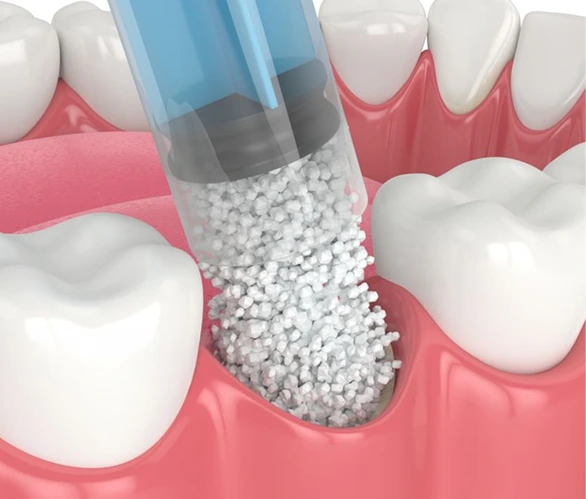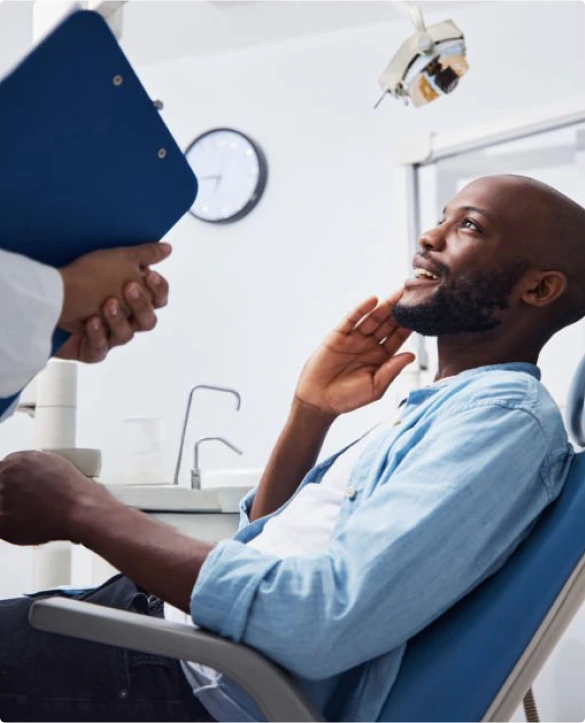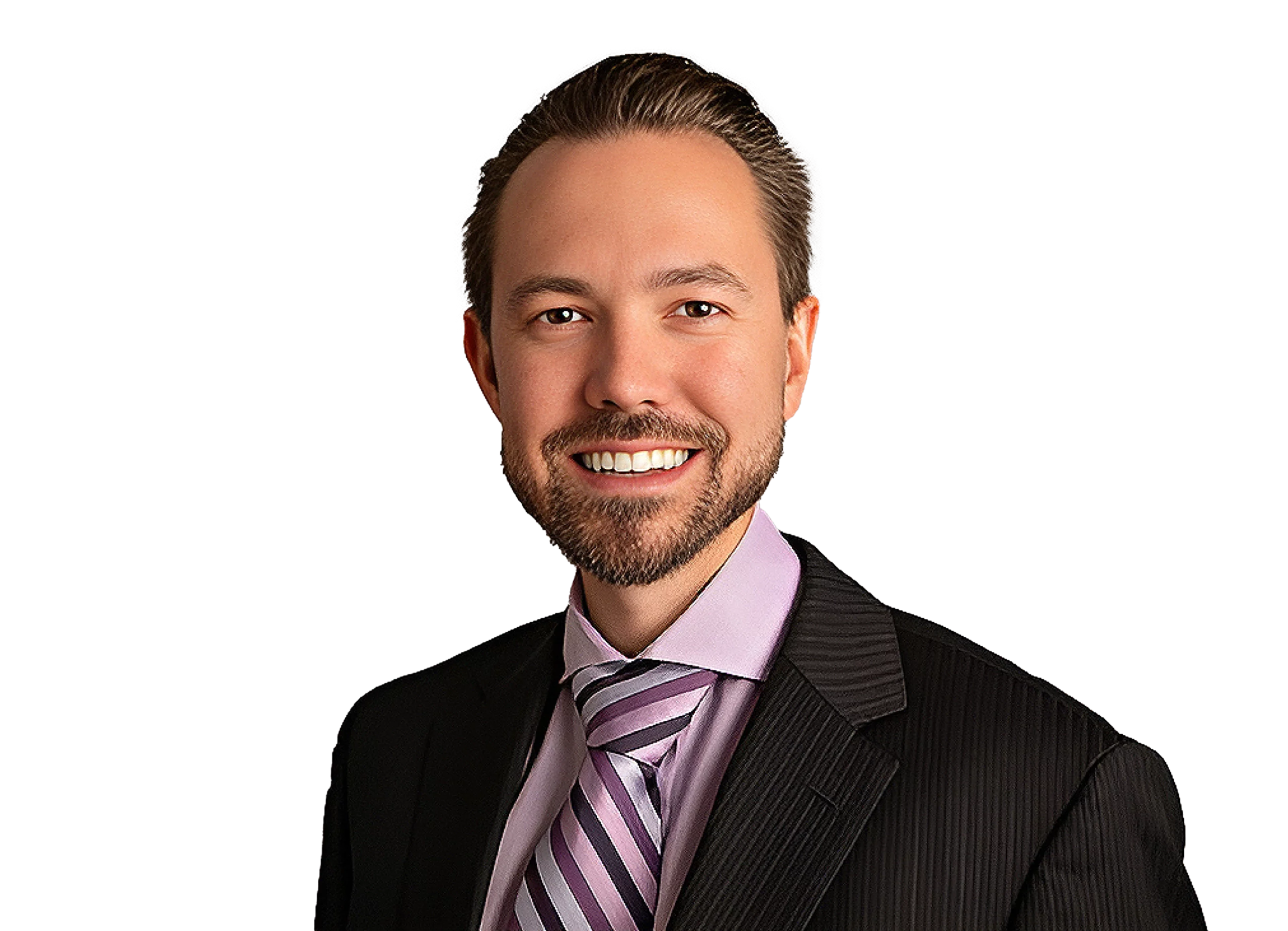
Many patients experience jawbone atrophy due to missing teeth and other oral problems. Without timely treatment, the jawbone may deteriorate to a level that will not allow for the proper placement of dental implants. When this situation occurs, the patient is often not considered a candidate for implantation. With current surgical advances, however, we can grow bone where it is needed through grafting. This innovative solution allows us to place a dental implant with the correct length and width so that people can restore the appearance and function of their smiles.


A bone graft is a surgical procedure that adds volume and density to weakened areas of the jawbone. It involves placing material into the inadequate bone structure. The graft serves as a framework or scaffold that supports new bone growth and gradually integrates with the existing tissue through a natural healing process. This procedure is often necessary when the jawbone lacks sufficient mass to anchor the dental implant. Bone grafting helps create a strong foundation in the lower or upper jaw, particularly in areas affected by tooth loss, gum disease, congenital defects, tumor surgery, or other issues.
An autograft is considered the “gold standard” of bone grafting because it uses tissue harvested from the patient’s body, typically from the jaw, hip, tibia, or another bone suitable for the procedure. This type of graft provides the best results because it contains living bone cells (osteoblasts) and growth factors that promote natural regeneration. Since the material comes from the patient’s own body, there is no risk of disease transmission or rejection, and it has the highest success rate among all graft types.
Allografts are tissues obtained from human donors, usually from bone banks. They serve as a scaffold for new bone formation and are available in various forms, including freeze-dried and demineralized freeze-dried bone. The donor material is carefully processed and sterilized to maximize safety. Allografts are usually used for minor bone grafting.
Xenografts are derived from non-human sources, most commonly from bovine (cow) or porcine (pig) bone. These materials are processed to remove all organic components while maintaining the natural bone mineral structure. Xenografts are biocompatible and provide an excellent scaffold for new bone growth. They are widely available and have been used successfully for many years, though they may take longer to integrate than autografts.
Alloplastic grafts are completely synthetic materials designed to mimic the properties of natural bone. Standard options include hydroxyapatite, beta-tricalcium phosphate, and bioactive glass. These synthetic alternatives eliminate the risk of disease transmission and are available in unlimited quantities. They provide a predictable alternative to natural bone tissue. Synthetic grafts can be manufactured with specific properties to enhance bone regeneration, though they may not be as effective as autografts in promoting new bone growth.

To keep the graft material in place, Dr. Nesiba may use small screws, pins, or a biocompatible membrane. These ensure the graft remains stable during healing and repairs defects in the jawbone.

After securing the new material, Dr. Nesiba carefully repositions the gum tissue over the graft and sutures the incision. Absorbable or non-absorbable stitches may be used, depending on the surgical technique and the patient’s needs.


Once the graft is in place, the surgical site is cleaned, and gauze may be applied to manage bleeding. Dr. Nesiba provides immediate instructions for managing the healing area and scheduling follow-up visits.

The procedure begins with anesthesia to ensure comfort. This may involve local anesthesia to numb the specific area, sedation to help the patient relax, or general anesthesia for more extensive grafting. The choice depends on the complexity of the procedure and the individual’s comfort level.

Once the area is anesthetized, Dr. Nesiba makes an incision in the gum. This is done carefully to minimize discomfort and provide sufficient access to the jawbone.

The exposed jawbone is cleaned and prepared to receive the graft material. This may involve smoothing uneven bone surfaces or debriding (removing damaged or dead tissue) to ensure the graft adheres effectively to the bone.

The material — autograft, allograft, xenograft, or synthetic — is shaped and placed into the bone defect or the area requiring augmentation. This scaffold promotes natural bone regeneration over time.

After undergoing a bone graft procedure, proper care is essential to ensure optimal healing and success. Follow these tips to promote a smooth recovery and minimize any complications:
It is normal to experience some discomfort and swelling after the procedure. To alleviate symptoms in the first 48 hours, follow our prescribed pain management regimen and apply ice packs to the outside of your cheek near the surgical site for 15-20 minutes at a time.
Nicotine and alcohol can impede the healing process and increase the risk of complications. It is highly recommended that patients abstain from both of them.
Rest is essential during the recovery phase. Do not engage in strenuous physical activities, heavy lifting, or any actions that might stress the treated site for the first few weeks. This will help ensure the graft heals properly without displacement.
Make sure to attend all follow-up appointments with Dr. Nesiba to monitor your healing progress. Any issues or concerns can be addressed promptly to ensure a smooth recovery and successful graft integration.

Bone grafting is often necessary for individuals who require dental implants but lack sufficient bone to support them. Based on their specific needs and conditions, several groups of patients may be ideal candidates for this procedure:
Bone grafting is crucial in restoring and augmenting the jawbone to make it suitable for dental implants. This procedure provides many advantages for patients looking to replace missing teeth and improve oral function:
Promotes natural bone growth
Improves chewing and speaking function
Protects remaining teeth from shifting
Restores lost bone structure
Enables successful dental implant placement
Enhances implant stability
Restores facial aesthetics
The cost of dental bone grafting in Denver ranges from $600 to $3,500 per site. The final price depends on various factors, including the type and amount of material needed, the complexity of the procedure, and whether guided bone regeneration techniques are required. Insurance coverage for this treatment varies, with some plans reimbursing a portion of the cost if the bone graft is deemed medically necessary. Patients should consult Dr. Nesiba to determine the most appropriate grafting method and get detailed financial information.
Cherry Creek Oral Surgery is an excellent choice for bone grafting procedures due to the exceptional expertise of Dr. John R. Nesiba, our triple-board-certified surgeon. His comprehensive training at prestigious institutions, including the University of Nebraska and Detroit Medical Center, combined with his specialization in facial reconstruction and dental implants, ensures perfect results. Our commitment to excellence is further demonstrated by Dr. Nesiba’s extensive hospital privileges across Colorado’s leading medical facilities and his impressive track record of over 1,000 successful implant placements. Cherry Creek Oral Surgery offers the best conditions for bone grafting procedures.
To learn more about bone grafting, schedule a consultation at Cherry Creek Oral Surgery today!
